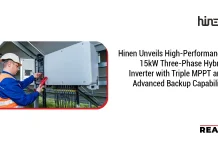Whether you’re driving on the highway, relaxing on your sofa, or working at your office desk, chances are you spend a significant portion of your day in air-conditioned environments. The Environmental Protection Agency (EPA) notes that, on average, people spend around 90 percent of their time indoors, where common air pollutants are 2 to 5 times more concentrated than outdoor levels. Therefore, ensuring that the air you breathe is of high quality becomes crucial. It is widely known that air conditioning (A/C) units are equipped with filters. It is often assumed that these filters ensure the air you breathe is free from impurities and safe for consumption. The process of removing particulates from the air is called air purification or filtration. So, why is this process significant? Let’s learn more about it in detail in this blog.
What is Air Purification?
Air purification or filtration is the act of eliminating impurities and harmful substances from the air in order to enhance its overall quality. There are multiple techniques and technologies available for achieving this goal, such as employing air purifiers, filtration systems, and other devices designed for air treatment purposes. According to Extrapolate’s estimates, the air purification market is anticipated to generate revenue of $29.32 billion by the year 2030.
Why is Air Purification Important?
Air filtration is of paramount importance as it directly influences the quality of the air we breathe, significantly impacting our health and well-being. In both indoor and outdoor environments, pollutants, allergens, and airborne contaminants pose risks to respiratory and cardiovascular health. Air purification systems play a crucial role in removing these harmful particles, providing a cleaner and safer atmosphere.
By reducing the concentration of pollutants, such as dust, pollen, mold spores, and volatile organic compounds (VOCs), air purifiers contribute to a healthier living and working environment, mitigating the risk of respiratory diseases, allergies, and other health issues. Moreover, amidst the escalating trends of urbanization and industrialization, where worries about air quality are growing, the significance of this procedure goes beyond individual well-being, encompassing the broader health of communities and contributing to the sustainability of our planet.
Air filtration serves as the initial barrier to safeguard against airborne pollutants. HVAC systems employ various types of filters, ranging from standard filters designed to capture larger particles in the air to specialized HEPA filters capable of trapping particles as minuscule as 0.3 microns. Obtain personalized recommendations for business writing, academic assignments, and more.
Applications of Air Purification
Air purification finds applications across various settings to enhance indoor air quality and create healthier environments.
● Residential Spaces:
In homes, air purifiers are commonly used to reduce allergens, dust, and pet dander, creating a cleaner and healthier living environment. These are especially advantageous for individuals dealing with respiratory conditions or allergies.
● Commercial Buildings:
Offices, hotels, and other commercial establishments utilize air purification systems to improve indoor air quality for occupants. This is crucial for employee well-being, productivity, and providing a comfortable atmosphere for clients and customers.
● Healthcare Facilities:
Hospitals and clinics implement advanced air filtration systems to maintain sterile conditions and prevent the spread of airborne infections. This is essential for protecting both patients and healthcare professionals.
● Educational Institutions:
Schools and universities use air purifiers to create a conducive learning environment by minimizing the presence of pollutants and allergens. Improved air quality can positively impact the health and concentration of students and educators.
● Industrial Settings:
Manufacturing facilities and industrial spaces employ air purification systems to control the release of pollutants and ensure the health and safety of workers. These systems help mitigate the impact of industrial emissions on both the workforce and the surrounding environment.
Air Purification Methods
Air purifiers have an enhanced functionality that goes beyond simply eliminating particles from the air. They actively engage in neutralizing pollutants, with a particular focus on airborne viruses, molds, and bacteria that have the potential to cause illnesses.
UV air purifiers make use of Ultraviolet (UV) light to eliminate viruses, bacteria, and other organic substances. UVC lamps emit strong rays of light that effectively disinfect airborne pollutants. However, certain systems necessitate the contaminants to either directly contact the light or be in close proximity to it to neutralize them.
Chemical air purifiers work by causing reactions that disintegrate the cellular structure of pollutants. The specific method of disintegration varies depending on the type of chemical employed. Some chemicals release free radicals that corrode the cell membrane, while others dissolve the cellular walls of pollutants.
Hydrogen peroxide air purifiers, categorized as chemical air purifiers, emit a minimal quantity of a highly potent cleansing substance into the atmosphere. Consequently, any airborne pollutants coming into contact with it are promptly eliminated, effectively halting their progression.
Technologies Behind Air Purification
High-Efficiency Particulate Air (HEPA) Filters
- HEPA filters have been specifically engineered to trap minuscule particles, such as dust, pollen, mold, and bacteria.
- These filtration systems are commonly utilized in air purifying devices, ensuring the efficient elimination of allergens present in the air.
Activated Carbon Filters
- Activated carbon filters demonstrate exceptional effectiveness in capturing and immobilizing unpleasant smells, gases, as well as volatile organic compounds (VOCs).
- Air purifiers play a vital role in removing unpleasant odors and harmful chemical contaminants from the atmosphere.
Ultraviolet (UV) Germicidal Irradiation
- UV-C light is utilized to eliminate or render microorganisms like bacteria and viruses inactive.
- This innovative technology greatly improves the efficiency of air purifiers in combating the transmission of airborne diseases.
Ionizers
- Ionizers emit electrically charged particles that bond with airborne particles, facilitating their capture by filters.
- This technology enhances the overall efficiency of air purification systems.
Concluding Words
The journey through the realm of air purification unveils its crucial role in safeguarding our health and improving the quality of the air we breathe. From advanced filtration technologies to smart innovations and a commitment to environmental sustainability, the industry continues to evolve. Embracing these advancements not only ensures cleaner and healthier indoor environments but also contributes to a sustainable and breathable future for generations to come.
Browse More Posts:-
Golf Shaft Market
Healthcare Nanotechnology Market
Home Appliance Market
Home Laundry Appliance Market




